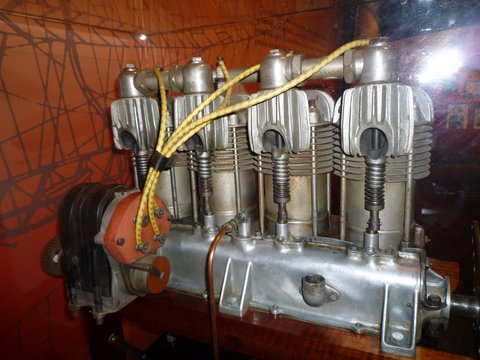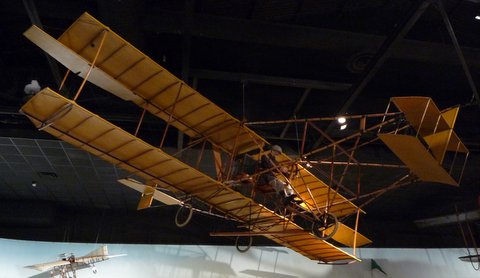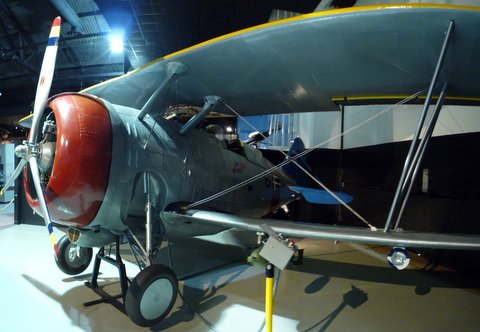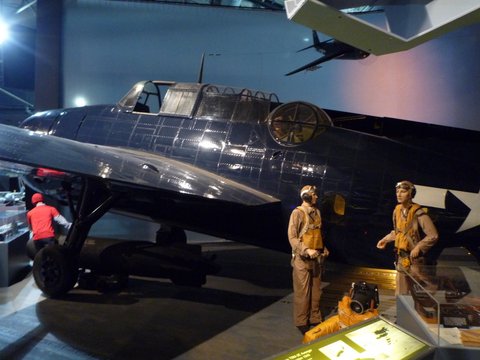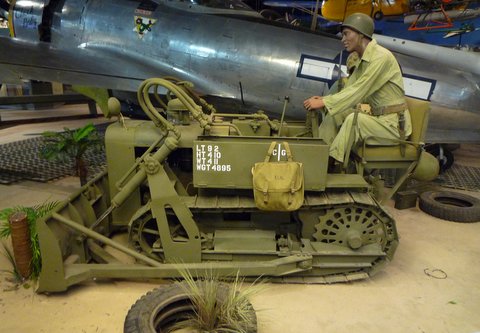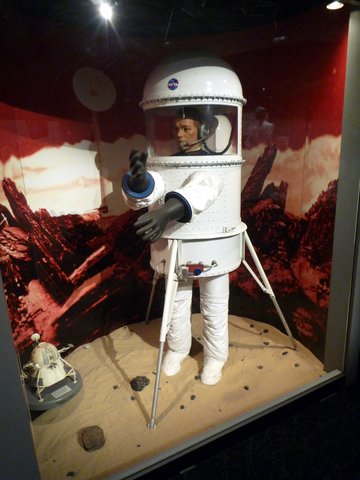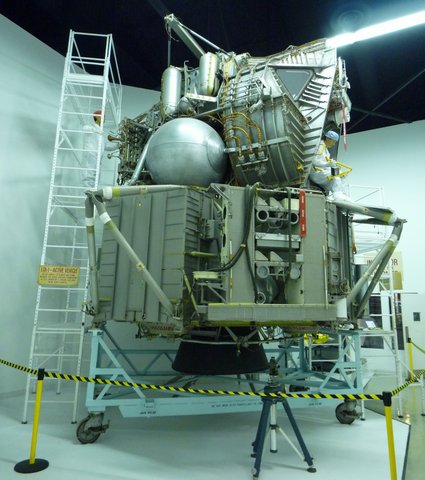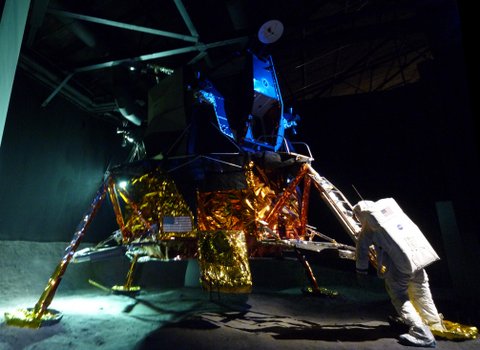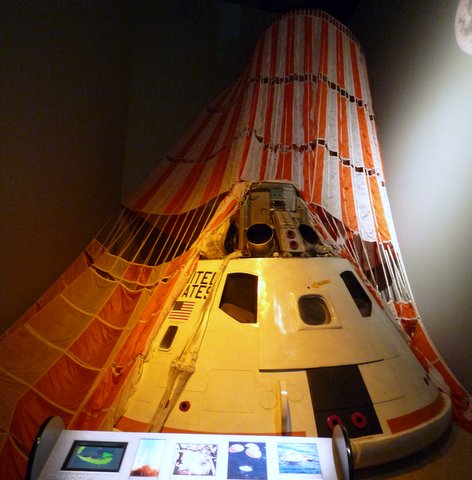The Cradle of Aviation Museum is a beautiful facility that opened in 2002. It has a large number of historic exhibits, a few reproductions, and many dioramas providing a history of the aerospace industry, with a heavy focus on Long Island’s contributions to that industry.
Dioramas explain man’s ancient desire for flight, and the realization of that dream with balloons. However, balloons were subject to the wind, until the internal combustion engine allowed for some semblance of control. Here is an example of one such engine:
However, balloons were still very delicate and not easily controllable, which led to greater emphasis on the development of airplanes.
The first successful flight on Long Island was that of the Herring-Curtiss No. 1 Golden Flyer, in July 1909. The New York Aeronautic Society paid Glenn Curtiss and Augustus Herring $5,000 to build the aircraft, which was the first commercial aircraft sale in the United States.
Aircraft were soon used for military applications. Grumman was a big player, manufacturing planes such as this Navy fighter, the F3F, which was manufactured in Bethpage, New York. This airplane was the end of one era: the last American biplane fighter aircraft.
The Grumman G-21 Goose was intended for wealthy private buyers, who would take off from the waters near their Long Island mansion and land at a seaplane base near Wall Street. In the end, the Navy ended up being the largest buyer. A total of 345 were built between 1937 and 1945.
During World War II, Grumman expanded its workforce and output tremendously. Even that wasn’t enough to keep up with demand, and Grumman licensed General Motors to produce the Grumman TBF/TBM torpedo bomber. The TBF’s were made by Grumman, and the TBM’s by General Motors. A total of 9,839 of the TBF/TMB series were manufactured. This is a TBM-3E:
During the Korean War, Grumman’s F9F Panther was well-received, but the Russian MiG-15 was significantly faster, which was a problem. That led Grumman to redesign the F9F into the swept-wing F9F Cougar, which was about 12% faster than the Panther:
This tiny Clarkair CA-1 tractor/bulldozer was sized to fit inside a C-47 cargo plane or CG-4 glider. Engineers could land and rapidly build or repair a runway with equipment such as this:
In 1960, Republic Aviation Corporation won the first NASA contract for an experimental spacesuit. This replica led to the suits eventually used.
This is Grumman’s LTA-1 (LEM Test Article 1), which was used for pressure, electrical and vibration testing of the Lunar Excursion Module (LEM). I didn’t find it to look anything like the LEM, which surprised me.
However, in the adjacent room they had this easily-recognizable lunar module. This is LM-13, ordered for the Apollo 19 mission, which was eventually canceled. [LM-13 has been modified to appear like LM-5 at the Apollo 11 landing site.]
This is Apollo Command Module 2. It was launched in an unmanned flight into low-earth orbit on January 20, 1966.
The entry hall to the museum includes this Grumman F-11A:
These photos only represent a fraction of the aircraft and other items to be found in the museum. It’s definitely worth visiting.

